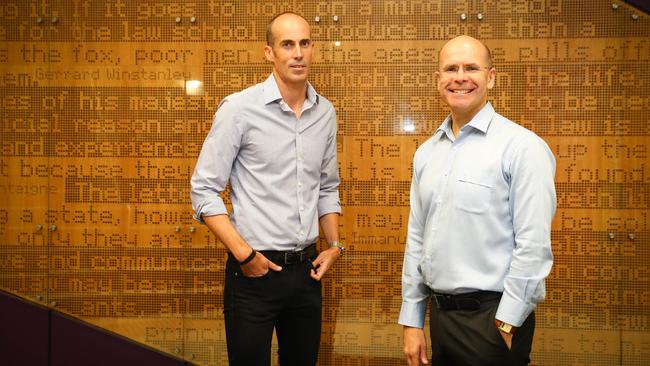Assent ruled in the High Court under Chief Justice Robert French
The High Court under former Chief Justice Robert French has been revealed as a haven of agreement.

The High Court under former Chief Justice Robert French has been revealed as a haven of agreement in which almost a third of cases resulted in a single unanimous judgment.
Analysis by leading academics has found that the level of agreement among the judges of the French court marked a sharp departure from what had happened in the past.
Throughout Robert French’s eight years as Chief Justice, 32 per cent of cases resulted in a single unanimous judgment compared to an average of just under 20 per cent during the tenure of his most recent predecessors: Chief Justices Murray Gleeson, Gerard Brennan, Anthony Mason and Harry Gibbs.
Justice French, who retired last month, has been succeeded by Chief Justice Susan Kiefel, who also had an exceptionally low personal dissent rate and frequently wrote joint judgments with Justice French.
During his time on the court, Justice French sat on 371 cases and dissented in just nine.
This gave him an overall dissent rate of just 2.43 per cent compared to Sir Anthony Mason’s 6 per cent, which was the lowest dissent rate of the previous four Chief Justices.
These findings are from the latest analysis of the High Court by two of the nation’s leading academics — George Williams who is dean of law at the University of NSW, and Andrew Lynch who is deputy dean.
Their research, which will be presented today at a constitutional law conference hosted by the Gilbert + Tobin Centre of Public Law, shows that while Justice French had an extremely low overall dissent rate, he was more likely to disagree with his colleagues in constitutional cases.
But even then, he handed down just five minority decisions out of a total of 74 rulings on constitutional matters for a constitutional dissent rate of 6.67 per cent.
Of his four predecessors, only Chief Justice Gleeson had a comparably low dissent rate in constitutional matters, Professors Lynch and Williams found.
“There was a level of agreement on the French court we have not seen in contemporary times,” Professor Lynch said.
He believed it was difficult to attribute the high level of agreement to a single cause “but leadership of the court must matter”.
Unanimous judgments increased the level clarity about the law which helped lawyers, judges of lower courts and the parties to High Court cases, he said.
The standout dissenter during Justice French’s tenure was Justice Dyson Heydon with an overall dissent rate of 29 per cent compared to 6 per cent for the judges serving alongside him.
Justice Heydon followed another great dissenter, Michael Kirby, who dissented in more than 48 per cent of the cases he heard in 2006.
His last dissent, in 2009, attracted a rebuke from Justice French after Justice Kirby accused the other judges of racial bias against Aborigines.
Professors Williams and Lynch found that those judges who joined the High Court in the later part of Justice’s French’s tenure had an increased propensity to disagree with the majority.
“This may suggest that the court as a whole will display less consensus in future years,” they said.
Justice Michelle Gordon, who served her first full year on the court in 2016, was the most frequent dissenter. She disagreed with the majority in 15.38 per cent of the cases she heard, compared to 10.53 per cent for Justice Geoffrey Nettle.
They were the only judges with dissent rates last year that exceeded 10 per cent.
The research shows that the most frequent collaboration across all cases last year was between Justice Virginia Bell and Justice French.
The two judges who wrote together least often were Justice Kiefel and Justice Stephen Gageler who were joint authors of just eight rulings — or about 21 per cent of their decisions.
In constitutional cases the most frequent co-authors were Justices French, Kiefel and Bell.
Professor Lynch noted that the judges of the French court — and some its predecessors — held meetings after each hearing, which was a departure from the traditional approach used by judges in Britain.
“Other chiefs have done that — they have looked to create opportunities for exchange, whereas in the mid 20th century or earlier there was that English tradition of each judge deciding his reasons alone and there was not an opportunity to explore an institutional result in the way the US Supreme Court functions,” Professor Lynch said.
“Leadership matters — but it is also the case that you need a commonality of outlook so the raw stuff of agreement exists.”




To join the conversation, please log in. Don't have an account? Register
Join the conversation, you are commenting as Logout